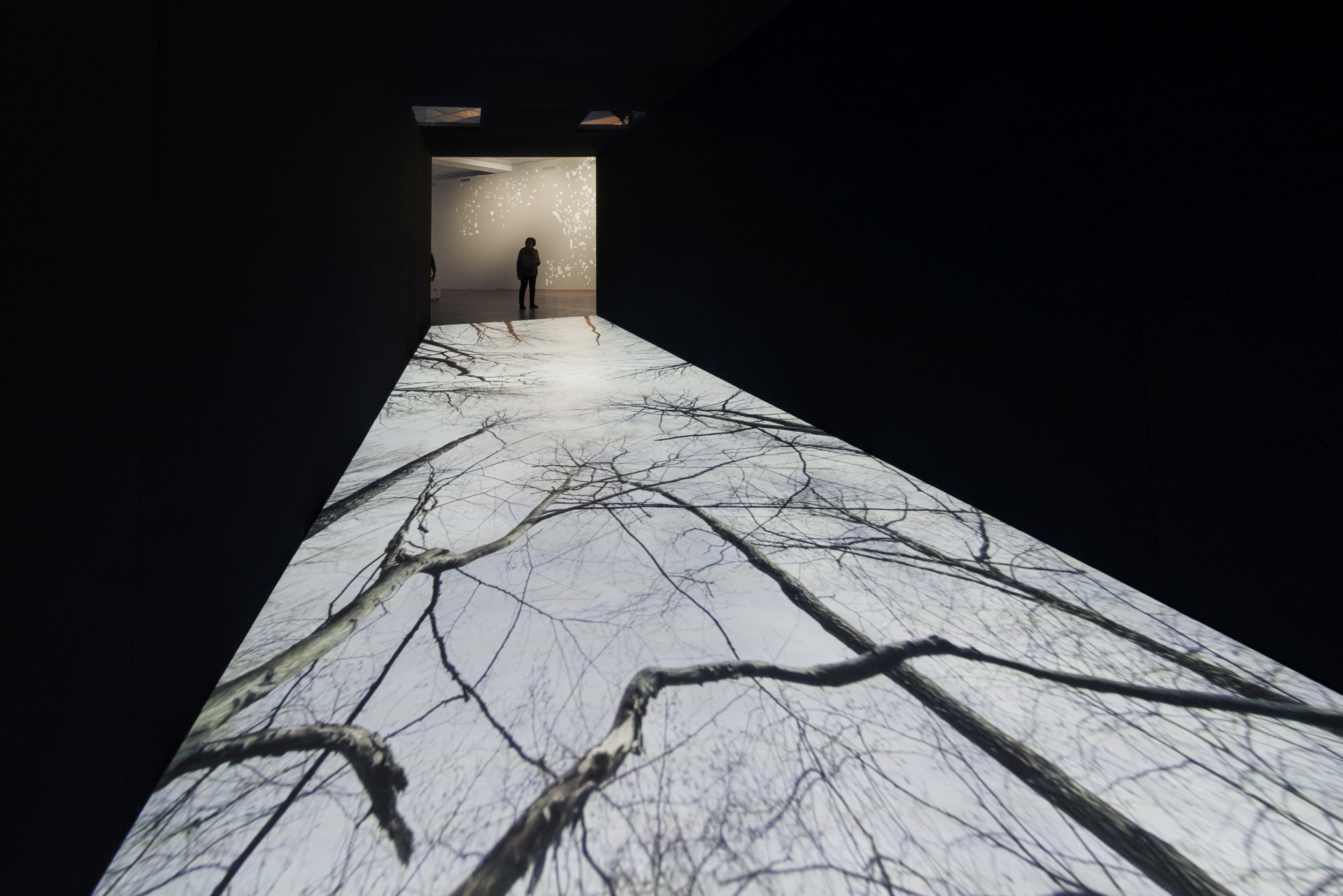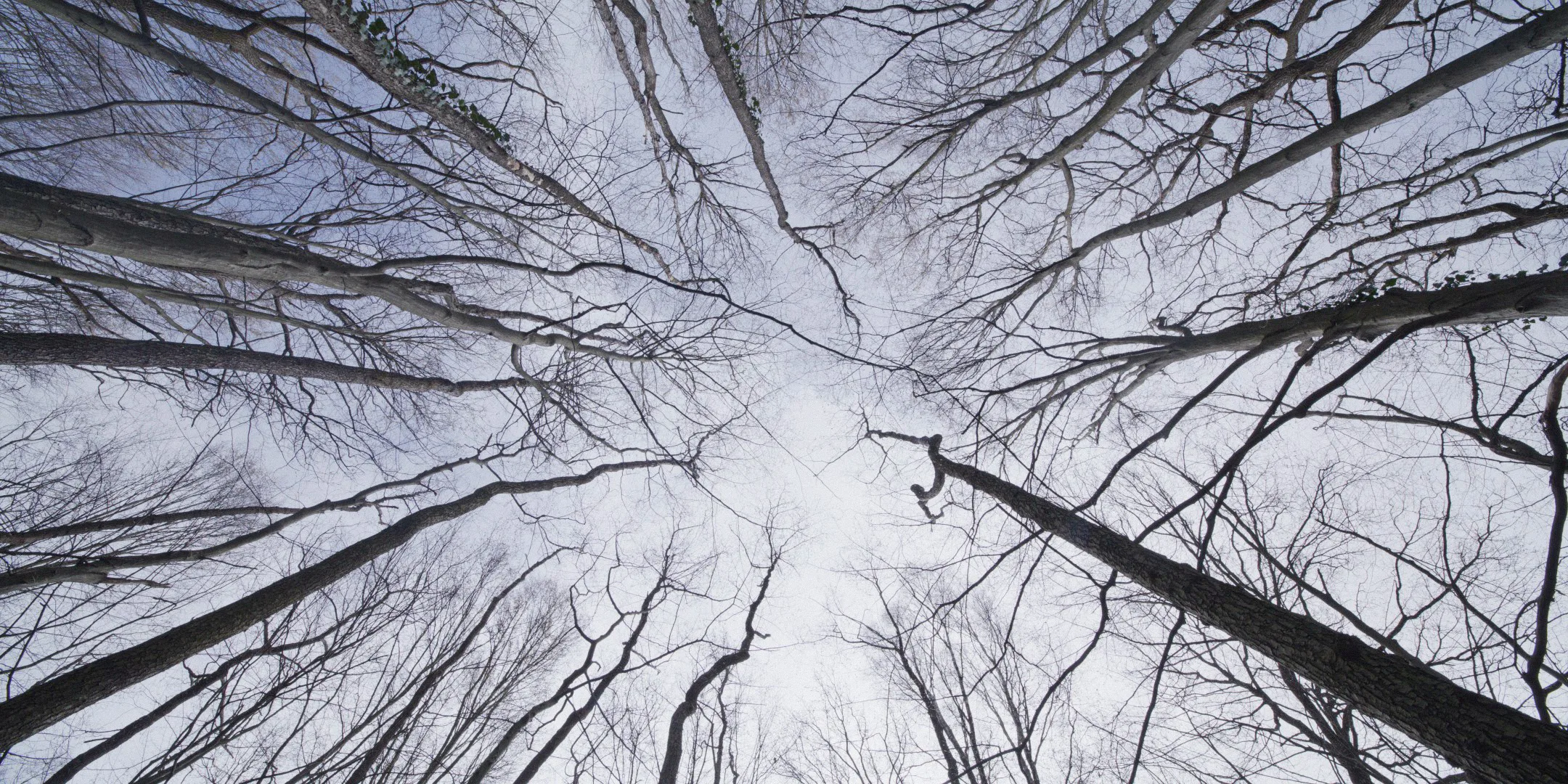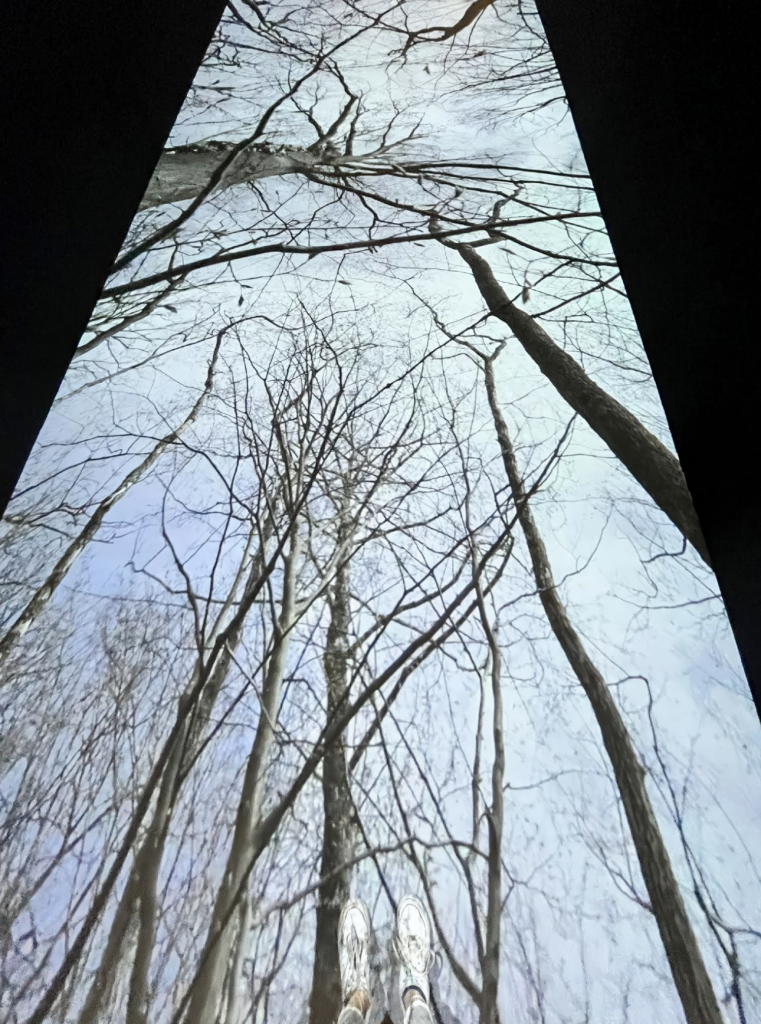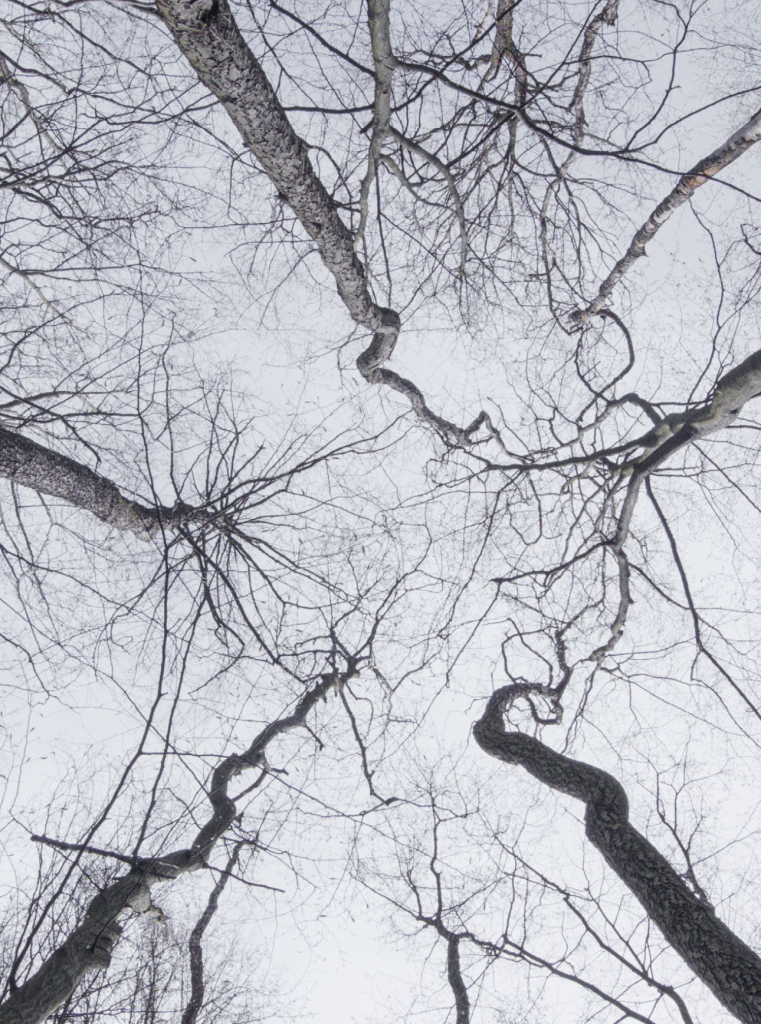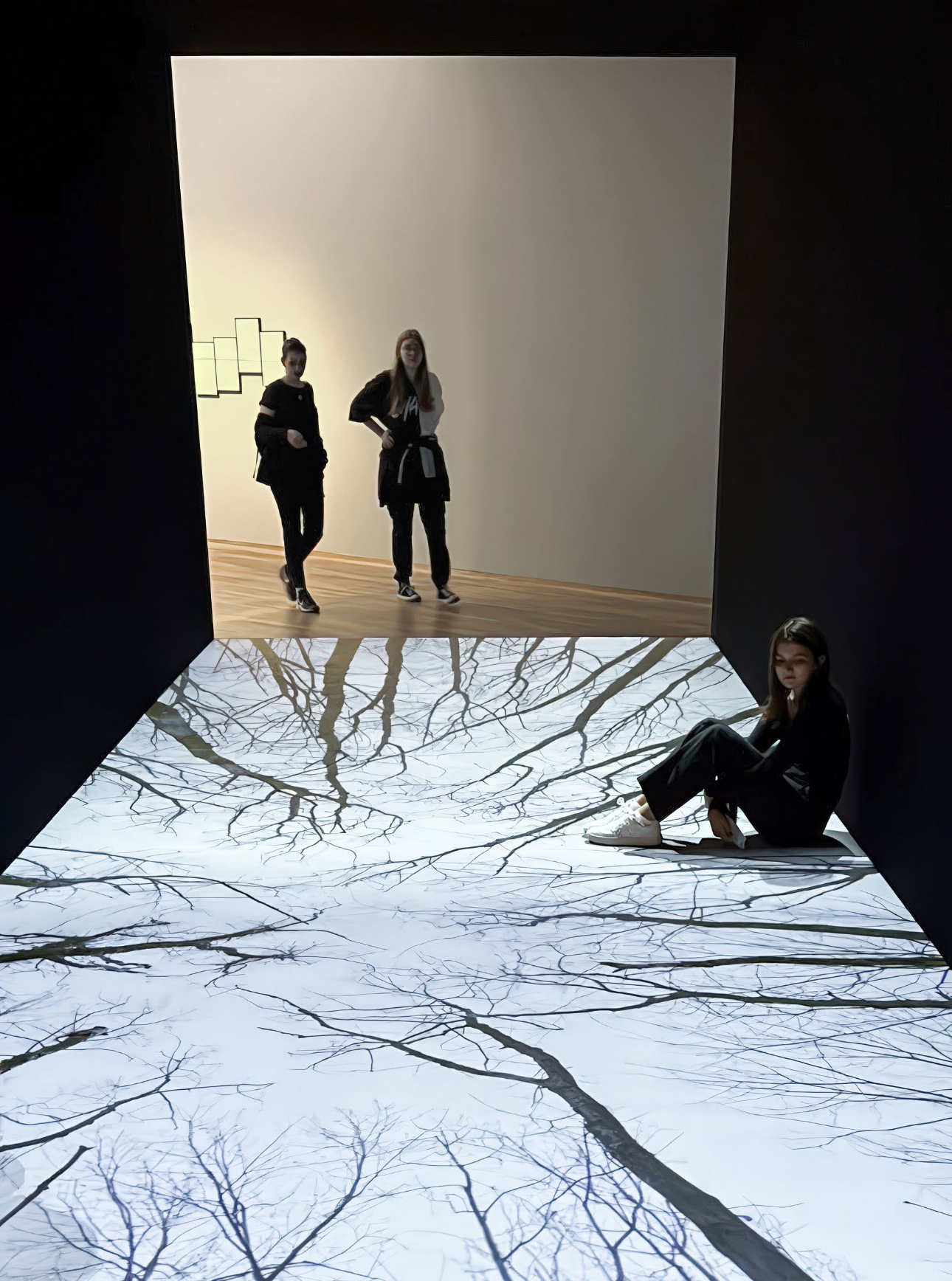Commissioned and first shown at the Hamburger Bahnhof – Museum für Gegenwart, Berlin, Bud’mo takes its title from a Ukrainian toast meaning “let us be.” The work was filmed in two forests in Western Ukraine: Chornyi Lis, where Soviet troops executed and buried hundreds of prisoners during the Second World War, and Bronitskyi Lis near Drohobych, where German forces carried out mass killings of the local population.
The genesis of the work reaches back more than a decade, when the artist’s first child loved to walk in a Berlin cemetery. Lying on his back in the stroller, he was captivated by the view of the sky through dense trees. Kaabi-Linke noticed that the trees there grew unusually close and strong, nourished by the bodies buried beneath them. It was a revelation: life and death not in opposition, but feeding one another, interwoven.
Years later in Ukraine, she encountered forests of the same beauty—yet marked by massacre, where thousands were killed and hastily buried. Filming from the upward perspective of a child, she also evokes the last vision of those who perished beneath the canopy: the sky fractured by branches before the eyes close forever.
Projected onto the floor like a reflection on water, the moving image envelops viewers in an unstable space: disorienting, immersive, at once peaceful and unsettling. Bud’mo is not about accusation or revenge, but about transforming darkness into light—acknowledging pain, honoring the dead, and finding in nature and memory the possibility of continuity, forgiveness, and renewal.
